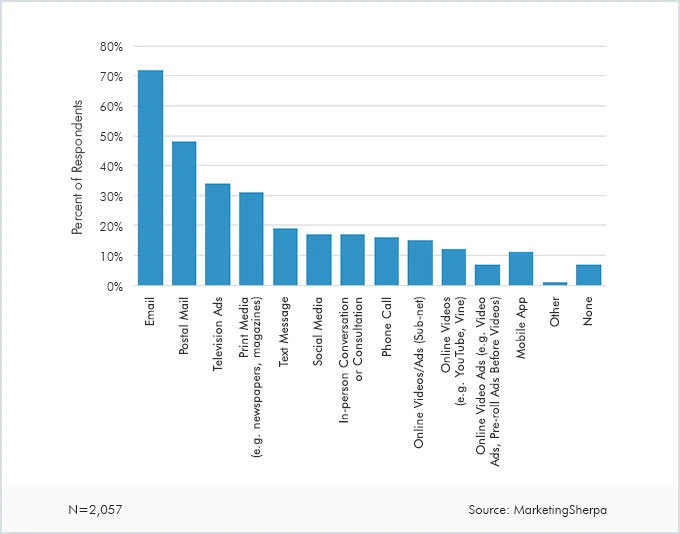5 tips for boosting your business while your clients are at home
Published by Incomedia in Guides and Tips · Thursday 26 Mar 2020
Now that we're all isolated in our homes, everything feels suspended as we sit and wait for things to get back to normal. But even though life is on pause as we await better days, you can still study and refine your ideas and strategies from your desk at home, to hit the ground running as soon as this is over.


In other words, take advantage of the time you have today to accomplish everything you've always put aside for later, and be ready for tomorrow when life goes back to normal.
Here are 5 local online marketing initiatives you can start with to boost your business and have new clients ready when you do get back to work.
1. Study your clients
Any business decision always begins with the same starting point: the client. Truly knowing your clients is the first key to success.
You probably already analysed your target client base before starting your business, in order to better tailor your offers to them. However, things may have changed since then, so why not use this extra time on your hands to take stock again?
Think about your usual clients and try to outline not only your typical client's profile, but also a profile of the type of client you'd like attract, even if you haven't yet managed to do so. Imagine what their interests and tastes are, what they might like to do, and where they can be found online. Use these factors, and anything else you can think of, to create actual "identity cards" for them. Give these typical clients a name, a face, an age, and a profession, to help you better understand them and determine the best way to satisfy their needs.
After completing this exercise, you'll have deeper knowledge of your target audience, as well as a sort of compass that will help guide you in all your future decisions: for example, you'll know how to modify your offers, lay out your upcoming communications, and create advertising campaigns based on these clients' interests.
2. Create your website
After setting up this"identity kit" for your typical client, the next step is to ask yourself, "How can I help them find me?"
Let's start with a simple fact: our shopping habits have changed.
When we're looking for a product, we don't ask expert friends or turn to our trusted stores' sales staff: we whip out our smart phones and immediately search online. So it's no surprise that some of our most common online searches are about businesses near us: bars, restaurants, shoe stores, etc.

That means it's also crucial for brick-and-mortar stores to have an online presence.
In other words, if you don't have a website yet, now's the time to catch up: your store deserves a website too.
Luckily, these days creating a website for your business is easier than you might think: in fact, there are many services and software options that can help you create your own website, often at low cost. WebSite X5 is one of them: this software offers templates to customise with your own content and configure with everything you need, like SEO features for Google and mobile browsing options.
With tools like these, you don't need to be a programming expert or a graphic designer to get professional results and create a trendy yet organised website.
So why not use this forced break to create your own website for your business?
3. Launch your online store
Once your website is up and running, you can explore and implement a wide range of strategies for promoting your business online and increasing your chances of success.
Among these, one of the first options to consider is launching an online store to sell your products and services on the Internet.
Remember, online sales volumes have been blowing up ever since we've all been advised to stay home. According to a study by the eCommerce B2C Observatory at the Polytechnic University of Milan's School of Management, in collaboration with Netcomm, in the week of February 24 to March 1, 2020 (just a few days after the start of the epidemic in Italy), online purchases of consumer goods increased by +81% compared to that same period last year.
This is certainly due to the effect of the coronavirus emergency, but you should also notice that there was also a 15% increase in online sales in 2019 in Italy, compared to 2018.
So it's clear that the emergency is even leading skeptics to turn to online stores and give them a try. There's also a good reason to assume that many of them will continue to make online purchases even after the emergency is over.
At this point, with an ever growing pool of potential clients, there's more and more to lose by not making use of the opportunities offered by an online store, especially if you're already managing a physical store.
Luckily for you, many of the services you can use to create your own website also offer online sales features: if you get to work today, by the time you open your doors again you'll not only have a website, you'll also be able to celebrate the launch of your new e-store.
4. Plan e-mail and newsletter campaigns
Together, e-mail and newsletters have become a pillar around which companies plan marketing strategies. The numbers show just how true that is: in 2019, there were 5.6 billion active e-mail accounts, and 99% of users stated that they checked their inbox every day. Furthermore, studies show that 72% of people preferred to receive promotional content via e-mail than through other channels.

That means that when it comes to sharing interesting news, sales, or changes to your opening hours, all of which are important updates, the most direct way to inform clients is by sending them an e-mail.
You can collect their e-mail addresses through your website, by suggesting that visitors sign up for your newsletter, or by offering a special deal or extra content in exchange for their e-mails. When your business re-opens, you can even do this in your physical store by having them fill out a form for a loyalty card, or in order to receive special offers.
The number 1 goal is to create an e-mail contact list that's as extensive as possible.
Meanwhile, your number 2 goal should be to create and send interesting e-mails, both in terms of the contents of your messages and the discounts they offer.
When done right, e-mail marketing will work wonders for both your audience engagement as well as sales and profits.
Don't know which service to use for your e-mail campaigns? Try Brevo: it's a comprehensive platform that not only handles e-mail marketing, but also allows you to use SMS messaging, segment your audience, and much more. Start now with the free plan.
5. Chat with your clients on social media
A website is a crucial tool, but social media is also important: you can't be present on every social platform, so choose the ones your clients use the most and start interacting with them.
Remember: we don't use social media to plan or make purchases, so don't promote your products too aggressively.
Your main objective should be to build relationships with your clients and local community, sharing your personality and business online. Try to be useful and engaging: you may not know it, but you have knowledge to offer in your field of business. Find a way to share that knowledge, and you'll become a trusted reference.
With a savvy mix of informational and promotional content, you'll keep your audience entertained while raising the profile of your products/services.
As a result, when your social media followers need to buy the type of thing you sell, they'll remember you, and with some luck, they'll arrive in your store - physical or virtual - to make that purchase.
Do you already have a presence on Facebook, Instagram, or YouTube? Great: look over your profiles to see if there's any room for improvement, or add any missing information; check the insights that these various platforms offer to see what your followers like most; take a peek at the competition to see if there's anything others are doing you could do too.
Facebook has already prepared a list of tips for using its platform and confronting the changes we're living through: find out more on Boost With Facebook.
In conclusion...
As you can see, there's always something to do if you look hard enough: even if you're stuck at home and you have to close your business because of "force majeure". Start with these 5 local online marketing tips and try to apply them to your individual situation: you'll turn this forced hiatus into an opportunity for growth, both for yourself and for your business.
Finally, here's an extra bonus: a little tool kit with some of the most crucial digital tools for your business:
- Google My Businessis a free resource that allows you to manage your local business's online presence on Google, including the Search and Maps features, which will help your clients discover your products and services, as well as contact you and find your store location.
- Brevo is one of the most popular e-mail marketing platforms. You can start with a free plan and then, as your needs change, decide whether to upgrade to a more comprehensive, paid plan.
- Facebook and Business Manager are both free tools. Facebook needs no explanation; Business Manager helps you best manage your advertisement campaigns on one of your clients' most-used social media platforms.
- Canva is a useful free tool for creating eye-catching graphics for your special offers.
- Pixabay is a site where you can find free, public domain images for your communications needs.

